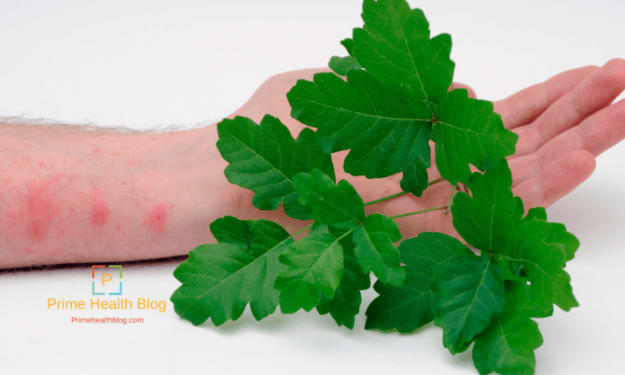Can Climate Change become a growing issue for some Migraineurs?
Climate Change for Migraineurs

Climate change has become a topic of increasing concern across the globe. Its effects are far-reaching and impact various aspects of human life, including health.
One specific area that has garnered attention is the potential connection between climate change and migraines. Migraineurs, individuals who suffer from migraines, may find that their condition is influenced by changing climate patterns.
This article delves into the possible link between climate change and migraines, discussing its impact and offering insights into managing this growing issue.
The Connection Between Climate Change and Migraines
Changing weather patterns and triggers
Migraines are complex neurological conditions often characterised by severe headaches, sensitivity to light and sound, and nausea. Many factors can trigger a migraine episode, and one of these triggers is changes in weather patterns. Climate change is causing shifts in temperature, humidity, and air pressure, which can potentially set off migraines in susceptible individuals.
Research indicates that certain weather conditions, such as rapid temperature fluctuations or high humidity, might trigger migraines or exacerbate their symptoms. The fluctuations in air pressure accompanying weather changes can also impact the body's vascular system and trigger headaches in those prone to migraines.
Impact on Air Quality
Climate change contributes to environmental shifts, including changes in air quality. Increased pollution levels due to factors like increased urbanisation, industrial activities, and forest fires can lead to poor air quality.
Polluted air can act as a trigger for migraines, especially in individuals who are already prone to these headaches. Fine particulate matter and pollutants in the air can irritate the respiratory system and potentially trigger migraine episodes.
Managing Migraines in a Changing Climate
For individuals who experience migraines, it's essential to be proactive in managing triggers, especially as climate patterns evolve. Here are some strategies that might help:
Keep a Migraine Diary: Maintain a record of your migraine episodes and the weather conditions leading up to them. This can help you identify patterns and specific triggers related to climate change.
Stay Hydrated: Changes in temperature can lead to dehydration, which is a known migraine trigger. Stay adequately hydrated, particularly in warmer weather, to reduce the risk of migraines.
Monitor Air Quality: Stay informed about air quality levels in your area. On days when air quality is poor, consider staying indoors and using air purifiers to reduce exposure to potential triggers.
Manage Stress: Climate change concerns can contribute to stress, which is another common migraine trigger. Practice stress-reduction techniques such as meditation, deep breathing, or yoga.
Cure your migraine at home
Rest in a Dark and Quiet Room: Migraineurs often find relief by resting in a dark and quiet room. This helps reduce sensory stimulation that can worsen migraine symptoms.
Apply a Cold or Warm Compress: Placing a cold or warm compress on your forehead or the back of your neck might provide relief. Experiment to see which temperature works best for you.
Stay Hydrated: Dehydration can trigger migraines, so it's crucial to stay hydrated. Drink plenty of water throughout the day, especially in hot weather.
Manage Stress: Stress is a common migraine trigger. Engage in relaxation techniques like deep breathing, meditation, or gentle yoga to help reduce stress levels.
Aromatherapy: Some people find relief through the use of essential oils like lavender or peppermint. Inhaling their soothing scents or applying diluted oil to the temples might offer relief.
Caffeine Intake: A small amount of caffeine might help alleviate migraine symptoms, as it can constrict blood vessels. However, excessive caffeine intake can lead to withdrawal headaches.
Try Herbal Teas: Certain herbal teas like ginger, chamomile, and peppermint might provide comfort and help ease migraine discomfort.
Massage: Gentle massage of the temples, neck, and shoulders can help relax tense muscles that might contribute to migraines.
Biofeedback: Biofeedback techniques involve learning to control physiological responses like muscle tension and heart rate. This can potentially help in managing migraines.
Acupressure: Applying pressure to specific points on the body, such as the space between the thumb and index finger, could provide relief for some migraine sufferers.
Remember that while these home remedies might provide relief for some individuals, they might not work for everyone. If your migraines are severe, frequent, or not responding to home remedies, it's important to consult a medical professional for proper diagnosis and treatment.
Please note that these suggestions are not meant to replace professional medical advice. Always consult with a healthcare provider before trying new treatments or remedies, especially if you have underlying health conditions.
Frequently Asked Questions (FAQs)
Q: Can climate change cause migraines?
A: Climate change itself may not directly cause migraines, but it can trigger migraine episodes in individuals who are susceptible to weather-related triggers.
Q: Are certain people more prone to migraines due to climate change?
A: Yes, individuals who are already prone to migraines might be more sensitive to climate-related triggers like temperature changes and shifts in air quality.
Q: How can I protect myself from climate-related migraines?
A: Keeping track of weather patterns, staying hydrated, monitoring air quality, and managing stress can all help in protecting yourself from climate-related migraine episodes.
Conclusion
As climate change continues to reshape the environment, its effects are being felt in various aspects of human health. Migraineurs may indeed be facing an increased challenge as changing weather patterns and declining air quality have the potential to trigger migraines or worsen their symptoms.
By staying informed, adopting proactive strategies, and seeking medical advice when needed, individuals can navigate these changes and work towards managing migraines effectively even in the face of a changing climate.






Comments
There are no comments for this story
Be the first to respond and start the conversation.